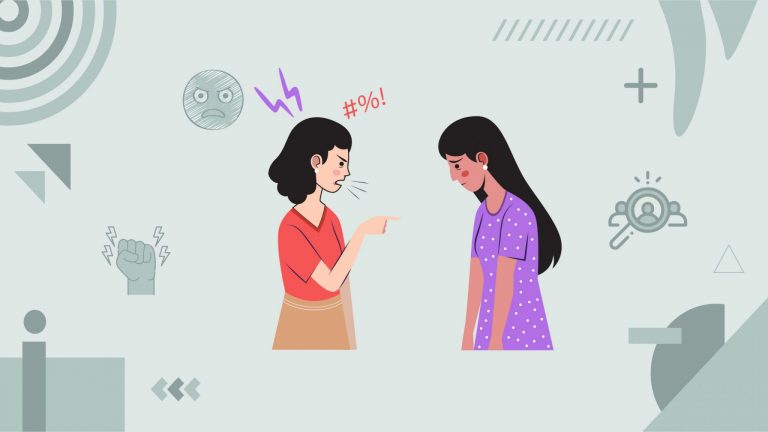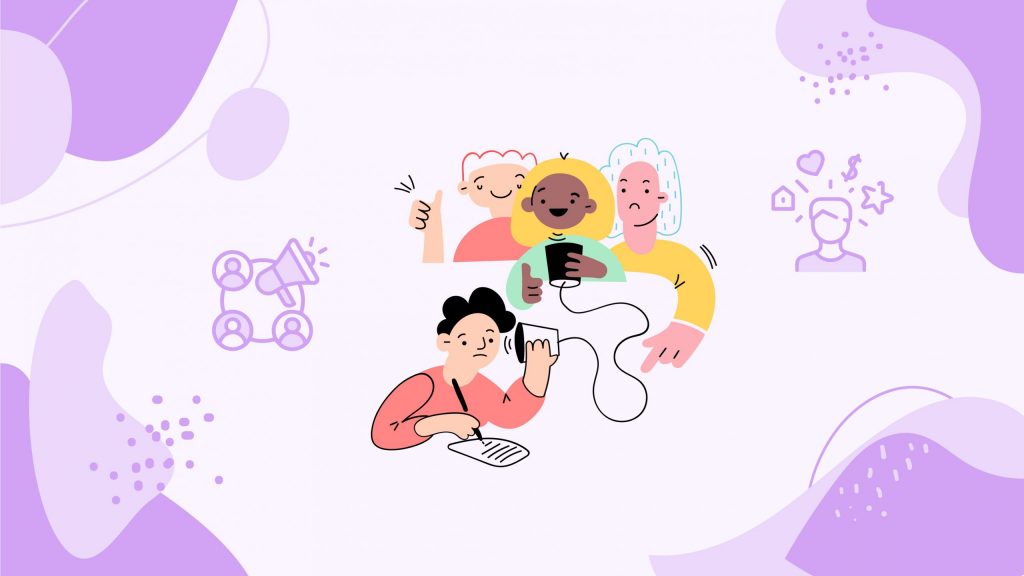Have you ever experienced a feeling where everything seems fine on the surface, but there’s an underlying feeling that something is off? Not because you are overthinking, but because there were subtle hints of behavior and instincts that you couldn’t ignore!
If yes, this isn’t something that happens rarely. It is often the case at our homes, offices, and other social circles where we maintain social contact with others.
To cut it short, we’d say it’s called passive-aggressive behavior. A behavior we learn unconsciously—when we haven’t yet discovered how to process our emotions.
And while we remain unconscious of the range of feelings and emotions we experience, they get stored in our subconscious minds and become automated patterns.
What is Passive-Aggressive Behavior?
Passive aggressive behavior is when you find it difficult to express your real feelings and instead find a backdoor for everything you want or desire.
Let’s say you have a friend who is sweet to your face, but you feel overpowered and dominated every time you see her. It becomes difficult to pinpoint what’s wrong, but something feels off. You often question your suspicions when she gives you dresses and cosmetics like hers (even though you have a different style and taste). But all the while, even when she does things for you, you remain confused about the intensity of your friendship—you share with her.
Now, this is a classic case of passive-aggressive behavior.
You feel restrained in her presence and are unable to figure out why. The reason is that the true intentions and agenda are hidden behind seemingly kind acts. On the surface, everything might appear fine, but the underlying issues are swept under the rug.
Here are similar examples to help you find the passive-aggressive behavior in or near you:
- Using non-verbal ways to express feelings instead of being direct (often with a smirk, a forced smile, eye-rolling, sighing, pursed lips, and even an expressionless face)
- Making someone uncomfortable with sarcastic talks and comments
- Standing in someone’s support, secretly wishing for things to go against them
- Making someone wait for calls and messages under the pretense that you haven’t seen any
- Saying something you don’t mean and vice versa
- Complimenting someone in ways that make them feel inferior
Are You indulging in passive-aggressive behavior? Let’s find out.
1. Do you often say ‘Yes’ to people’s requests only to regret it later internally?
a) Yes
b) No
2. Do you prefer to express your anger in indirect forms rather than being expressive about it?
a) Yes
b) No
3. Do you attempt to escape the hard conversations?
a) Yes
b) No
If most answers were ‘Yes,’ it is likely that you have been indulging in passive-aggressive behaviors. It might be healthy to explore direct communication.
What Makes Us Slip into Passive-Aggressive Behavior?
When, as kids, we were not allowed to express our emotions, and while expressing we feared the consequences, we learned to keep them hidden. When we couldn’t do it in direct ways, we found twisted ways to express them and fell into the pitfall of passive-aggressive behavior.
Also, in several cases where parents remain overly strict with their kids and want to model their behavior in specific ways, they often end up suppressing their children’s emotions—giving rise to passive-aggressive tendencies.
Other than this, there can be several biological and environmental reasons that can lead to passive-aggressive behaviors:
- Genetic Predispositions
- Neurodevelopmental Factors (ADHD, ASD)
- Hormonal Influences
- Schizophrenia
- Stress
- Depression
- Anxiety
Find out if you have fallen victim to passive-aggressive behaviors in your social circle.
1. You felt hurt by someone’s behavior even when they were polite on the surface?
a) Yes
b) No
2. Were you made to self-doubt even when you were keeping clear intentions for someone?
a) Yes
b) No
3. After a dramatic event, you introspect and look within, only to find that you haven’t consciously done any harm or hurt to anyone and still stand faulty.
a) Yes
b) No
If the most answers were ‘Yes,’ you fell prey to passive-aggressive behaviors, whether knowingly or unknowingly.
Overcoming Passive-Aggressive Tendencies
When you fall victim to passive-aggressive behavior or detect your way of falling into this tendency, don’t shy away from taking ownership. Acknowledge the behavior and remain non-judgemental towards it.
Among the great benefits of countering passive-aggressive behavior is attaining Emotional Regulation. It refers to the ability to regulate and manage emotions in a healthy way. Once you sign up for a life with high EQ (emotional intelligence), you ultimately work towards your overall success and well-being.
👉 Fun Fact
Research shows that EQ accounts for up to 58% of performance in all types of jobs, making it a better predictor of success than IQ in many cases.
Follow the detailed ways to step out of this behavior and lead an authentic life.
#1: Be Assertive
Try to remain direct in your conduct. Make it a conscious habit to notice how you feel and act in certain situations. Notice if there’s a sync between your feelings and the actions you take in response to them. If not, be observant and try to bring your feelings and actions in sync. When you do this, you’re rewiring your brain and building new patterns.
Studies indicated that practicing assertiveness in relationships can have a significant impact on the quality of your relationships. Individuals who choose authentic conduct in place of passive-aggressive behaviors enjoy greater self-esteem and self-worth.
🎭 Activity
Introspect and find a situation where you are typically being passive-aggressive. Once identified, try to replace your response with an assertive action and see how it looks and feels to deal with it in a direct way.
#2: Improve Your Communication
It all starts with communication. The more direct you are, the less likely you’ll get into passive-aggression. It’s important that while speaking, you remain in sync with your real feelings and emotions.
For this, you can follow the example of the people who you think are upfront and honest in their speech. Observe how they express their truths without reserving any negative emotion within. Also, you can seek help from books and online courses on how to remain direct in your communication.
#3: Increase your Awareness
Spend time on awareness-increasing exercises to identify your behaviors and patterns. It will help you in two ways: first, by helping you correct your own behaviors, and second, by preparing you to respond effectively to those who throw passive-aggressive behaviors at you.
You can start by remaining watchful of your feelings and actions. See the quality of thoughts running in your mind. Notice if there is any lingering fear, powerlessness, or helplessness that is fueling your passive-aggressive behavior. If you find them, try to process them and replace them with constructive affirmations (accountability, responsibility, etc.).
For this, you can indulge in meditation sessions using singing bowls. They leave a calm effect on your mind and senses—making you feel relaxed and tranquil for deep introspections.
#4: Be Honest and Upfront
When you decide to work on passive-aggression, try to be as honest and upfront as you can. It was nothing but leaving certain emotions unaddressed in the wake of societal fear, pressure, and consequences. When you embrace your emotions in totality and allow their free flow, you are removing the blockages and resetting your system.
Start by identifying your emotions, accepting them without judgment, and journaling them for better clarity. When you do this, you are rewriting your mental programming and, this time, taking complete charge of your emotional conduct.
Benefits of Cultivating Assertiveness
#1: Emotional Well-Being
When you switch to assertive living, you are taking leaps and bounds towards emotional well-being. By being direct in your speech and approach, you are eliminating all the drama and toxicity in your life. For us to lead an authentic and fulfilling life, it is critical that we swipe away the indirect behaviors. This helps reduce stress and anxiety and allows us to invest time, energy, and resources in constructive areas of our lives. Try writing your thoughts in a gratitude journal and it will help you elevate your mental state.
#2: Quality Relationships
Do you wish to have a switch button to a life where you are living a stress-free life and have emotionally fulfilling relationships? Move to the other side of the passive-aggressive behavior, and you’ll be in the place where you want to be. When we learn to remain authentic in our approach, we remove the unnecessary negativity from our lives.
The quality of relationships significantly improves when we say what we mean and mean what we say. This happens when we move past the passive-aggressive behavior where we keep hidden agendas.
#3: Conflict Resolution
Frequent conflicts are, anyway, the by-product of passive-aggressive behavior. When we choose to live on the other side of this spectrum, we minimize the conflicts and learn how to resolve the conflict effectively. On remaining upfront, we not only choose emotional well-being for ourselves us but also reduce the instances of being stuck in a conflict in the first place.
Try to engage in the direct communication. Instead of harboring resentment, anger, and frustration, make sure to address the matter head-on and relieve the negative emotions, if there are any. It will help to balance the emotions and increase the probability of positive outcomes.
#4: Personal Empowerment
By learning the direct approach and moving past passive-aggressive tendencies, you’ll become in charge of your life situations. You’ll get emotional clarity and build confidence to pass through the difficult conversations with grace. You’ll notice reduced levels of stress and anxiety—leading a life you’ve always wanted to live. Additionally, it’ll develop emotional resilience within you and allow you to bounce back with minimal hassle.
Assertiveness is a quality that changes your life for the better and allows you to transition to your best version. It encourages authenticity and further puts you in a spot where you can contribute to the empowerment of others.
Conclusion
When it comes to the principles of healthy communication, passive-aggressive behavior can be a huge barrier. If not replaced with healthy dynamics, it can cost us our mental peace, happiness, and even relationships. Try to incorporate healthy practices like observing your thoughts, emotions, and underlying intentions. It will assist you in bringing about the right actions and help unlearn the toxic behaviors in time. Also, resisting passive-aggressive behavior is a crucial step in fighting against it and replacing it with a healthy scenario.
Sources
- Life Space Crisis Intervention: The Psychology of Passive Aggressive Behavior in Families, Schools, & Workplaces
- ResearchGate: Expression of Hostility – Basis of Passive Aggressive Behavior. Correlational Study
- City of Madison: Passive Aggressive Behavior: Sources and Solutions for Library Workspaces
- Institute for Brain Potential: Passive Aggression, Sarcasm, Cold Anger, Hostility and Aggression






















